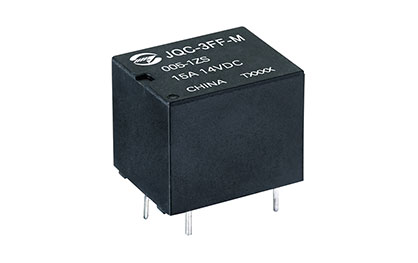
Like other automotive relays, a 5V automotive relay consists of a coil, which is energized by the vehicle's electrical system, and a set of contacts, which open or close when the coil is energized. When the contacts are closed, they allow current to flow through the relay and power the accessory or system that the relay is connected to. When the coil is de-energized, the contacts open and the current flow is interrupted.
5V automotive relays are often preferred over higher voltage relays for low-power applications because they consume less power and generate less heat. This can help to improve fuel efficiency and reduce the load on the vehicle's electrical system. Additionally, 5V relays are often smaller and lighter than higher voltage relays, which can make them easier to install and integrate into the vehicle's electrical system.

Control of lighting systems, such as headlights, turn signals, and interior lighting.
Control of power windows, door locks, and other power accessories.
Control of wiper and washer systems.
Control of the starter motor and ignition system.
Control of the fuel pump and other fuel-related systems.
Control of the cooling fan and other cooling-related systems.
Control of the horn and other warning systems.
Control of the audio system and other entertainment-related systems.
Control of the air conditioning and climate control system.
Control of various sensors and feedback systems.

Load requirements: The first consideration when choosing a 5V automotive relay is the load requirements of the system it will be controlling. This includes the voltage and current ratings of the accessory or system being powered, and the expected power consumption under different operating conditions.
Reliability and durability: The reliability and durability of the relay itself is also an important consideration. This includes the quality of the materials used in the relay, the design of the contacts and coil, and the expected lifespan of the relay under normal operating conditions.
Environmental factors: The environment in which the relay will be operating is also important to consider. This includes factors such as temperature, humidity, vibration, and exposure to chemicals or other contaminants.
Wiring and installation: The wiring and installation of the relay is another consideration. This includes the physical size and shape of the relay, the wiring and connection requirements, and the compatibility with the vehicle's electrical system.
Cost: Finally, the cost of the relay is an important consideration. While 5V automotive relays are generally less expensive than higher voltage relays, there can still be significant differences in price between different models and brands. It is important to balance the cost of the relay with the required features and performance to ensure that the relay is a good value for the application.
Email:
lilian@zettlernb.comCall Us:
+86-574-62502203Address:
No. 5, Shuntai Road, Yangming Industrial Zone, Yuyao City, Zhejiang Province